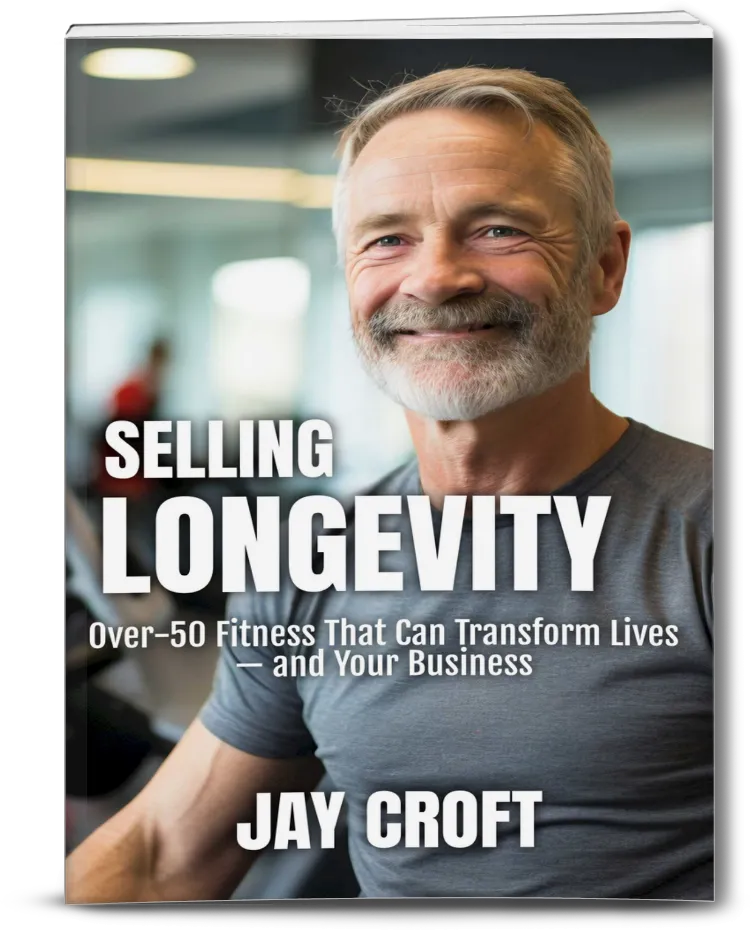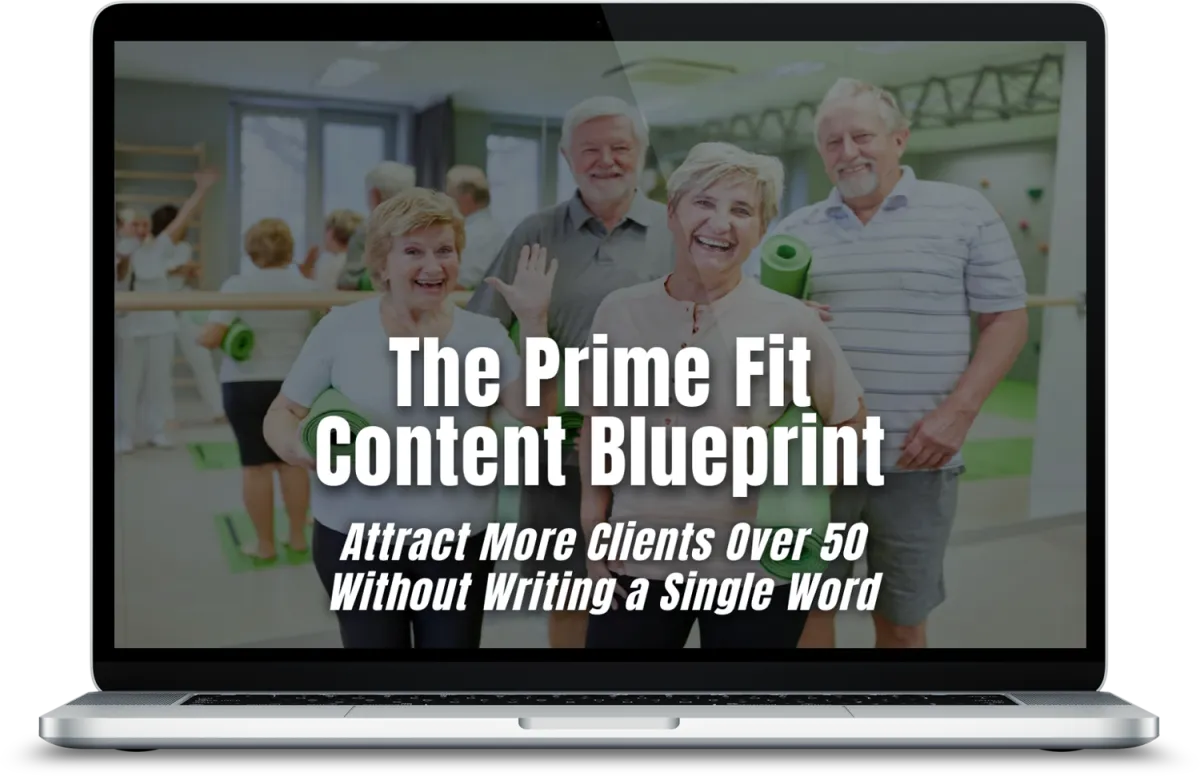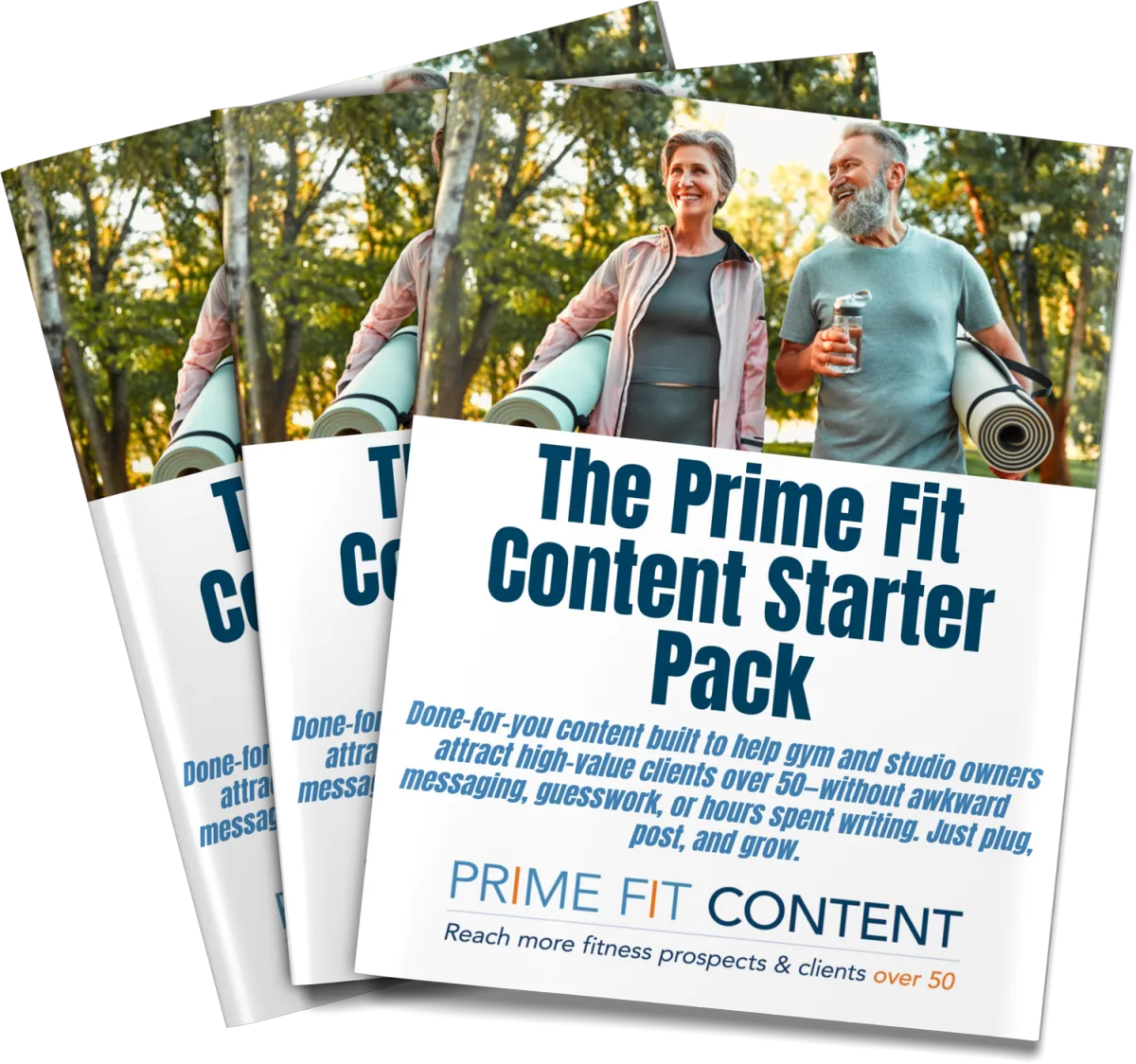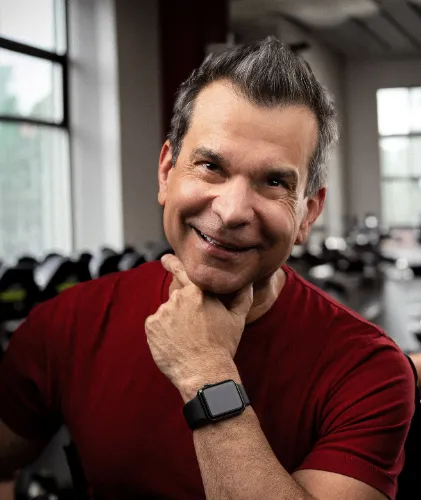Get your copy of my book today below

I help gym and studio owners attract committed, high-paying clients over 50…
With consistent, professional content that builds trust and fills your gym's quiet hours—without spending your nights writing posts or guessing what to say.
No fluff. No Robo-Copy. No trendy hacks.
Just steady growth with the right clients.
What Most Fitness Pros Choose First
The book gives clarity, the system saves time, and the starter pack gets you moving fast.

Selling Longevity
This book breaks down the untapped potential of the over-50 fitness market—and shows business owners how to reach it with clarity, confidence, and results. If you’re tired of chasing clients who ghost, bargain, or burn out, Selling Longevity will help you build a stronger, more sustainable business by connecting with the most loyal, underserved market in fitness.

The Prime Fit
Content Blueprint
This step-by-step system provides gym and studio owners with weekly, done-for-you content designed to attract high-value clients over 50, fill slow hours, and drive long-term revenue without requiring hours of writing or second-guessing your message

The Prime Fit
Content Starter Pack
This 4-week set gives you done-for-you content built to help gym and studio owners attract high-value clients over 50—without awkward messaging, guesswork, or hours spent writing. Just plug, post, and grow.
About
Jay Croft
Jay Croft is the founder and president of Prime Fit Content, a marketing service that helps fitness professionals grow their businesses by connecting with adults over 50 — a powerful and often overlooked demographic. Gyms and studios across the U.S., Canada, and beyond use Prime Fit Content to position themselves as trusted experts in active aging, boosting their credibility and client engagement.
Jay also hosts the Optimal Aging podcast, where he interviews thought leaders in fitness, health, and wellness. In addition to running Prime Fit Content, he writes regularly for fitness organizations and major media outlets, including CNN and WebMD.
Before launching Prime Fit Content, Jay was a journalist for newspapers around the country and worked in marketing and corporate communications for some of the largest companies in the U.S.

Here’s What
Fitness Pros Just Like You Are Saying:
“The system is super easy and extremely effective for getting 50+ leads!”
Dina Medina
Active Age Fitness
“The system saves me a ton of time and money!”
Juan Guerrero
Your Personal Best Training Studio
"Prime Fit Content helps me build relationships with prospects and clients, and it gets people in the door. It's been really life-changing."
Matt Benvie
Evolution Fitness
"My newsletter open rates are up, and my clients love the content! I'm reaching more people than ever before."
Shelley Turk
ProActive Fitness
“Prime Fit Content fills a 'great need in our industry' with strong writing about helping people over 50 meet their fitness goals.”
Lisa Wright
Functional Ageing Mastermind Coach
The over-50 demographic controls 70% of the nation’s disposable income, yet most fitness marketing targets younger audiences. Learn more about this powerful opportunity.
Podcast with Rick Mayo, CEO and founder of Alloy Personal Training
5-Star Reviews
JUAN GUERRERO
Director of Operations

It saves us so much time. Time I could be using towards getting new clients. in and saving money. We save so much time, so much money.

ROSA COLLETO
Owner

Time-saving for myself and my family. Foremail marketing,, and memes for motivation Monday. It's been a life saver.

SHARAN TASH
Owner

I am a senior, and there isn't a lot of content on the internet for my members who are 50 and older My members and potential members are loving it!

JACKIE BACHMEIER
Owner

As a studio owner trying to grow my business in a busy city, and a mom, grandma, and wife, I found that I was really struggling to find the time to write valuable content that was meaningful.

MAT BENVIE
Fitness Professional

Just like you, I'm a busy fitness professional that's not great at providing value-added content to the community. People love the content I get from Prime Fit! It's been life-changing!


I help gym and studio owners attract and retain loyal clients over 50 with done-for-you content and messaging strategies so they can grow their business without burning out or guessing what to say.
© 2025. All Rights Reserved | Privacy Policy
